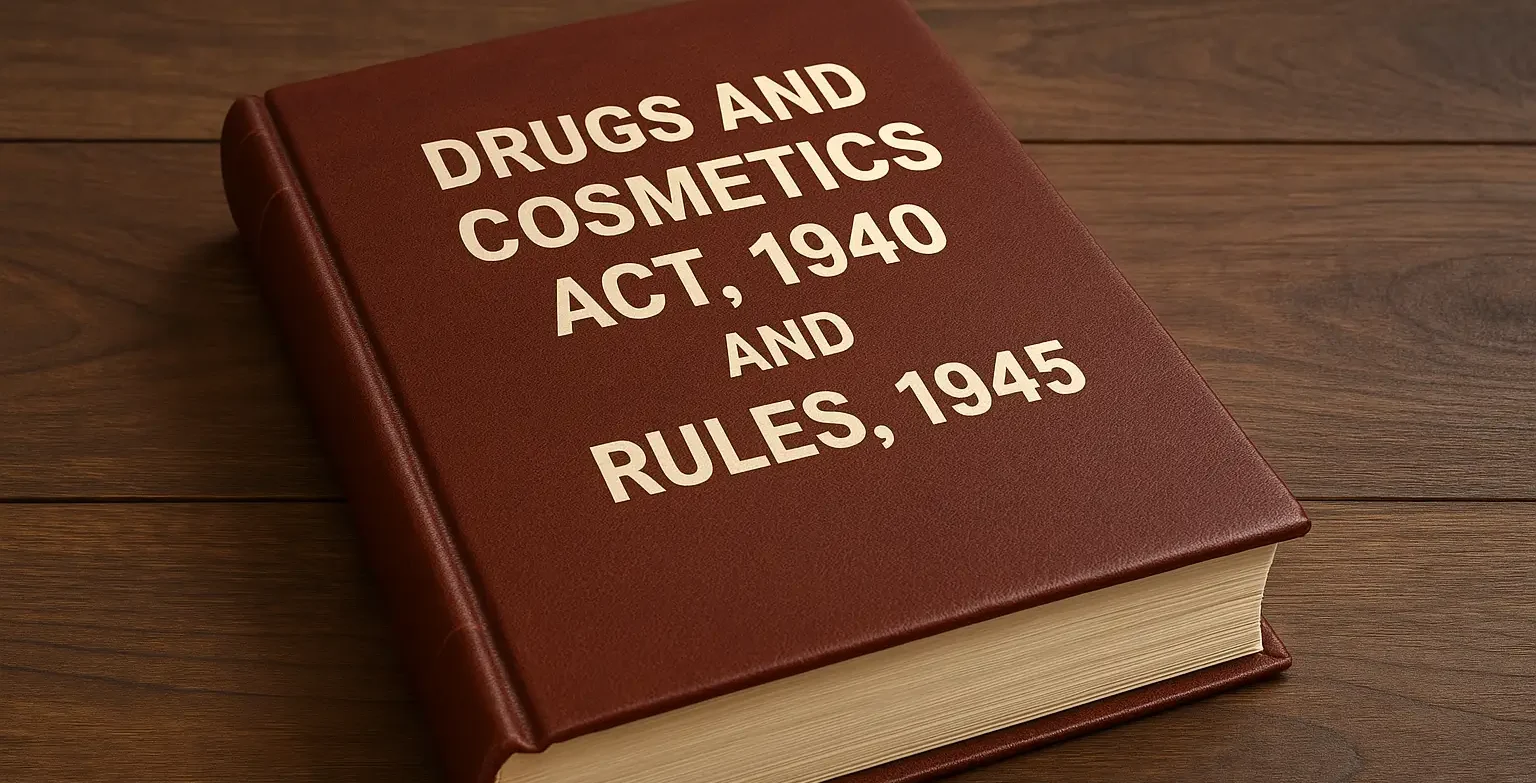Explore the key provisions of the Drugs and Cosmetics Act, 1940 and Rules, 1945 for drug regulation, safety, and legal compliance in India.
Introduction to Drugs and Cosmetics Act 1940 and Rules 1945
- The Drugs and Cosmetics Act, 1940 and Rules, 1945 regulates the import, manufacture, distribution, and sale of drugs and cosmetics in India.
- Its primary goal is to ensure the quality, safety, and efficacy of these products.
Historical Context
- Before 1940, India lacked standardized regulations, leading to substandard and adulterated products.
- Growing concerns for public health necessitated a robust legal framework.
Key Features
-
Regulation of Drugs and Cosmetics:
- Drugs: Used for diagnosis, treatment, or prevention of diseases.
- Cosmetics: Applied to the human body for cleansing, beautifying, or altering appearance without affecting body functions.
-
Licensing Requirements:
- Manufacturing License: For production of drugs and cosmetics.
- Wholesale License: For wholesale trade.
- Retail License: For retail distribution.
-
Standards and Quality Control:
- Establishes standards for quality, potency, and purity.
- Empowers authorities to inspect facilities for compliance.
-
Labeling and Packaging:
- Specifies labeling requirements to inform consumers.
-
Advertising Regulations:
- Prohibits false and misleading advertisements.
-
Offenses and Penalties:
- Defines offenses and prescribes penalties for non-compliance.
Rules of 1945
-
Standards and Formulations
- Specifications for quality and purity.
-
Licensing Procedures:
- Documentation and processes for obtaining licenses.
-
Labeling and Packaging Norms:
- Requirements for ingredient details, manufacturing and expiry dates.
-
Inspection and Enforcement:
- Procedures for inspections and compliance enforcement.
-
Special Provisions:
- Regulations for categories like Schedule G, H, M, N, etc., classifying drugs based on potential abuse.
Amendments and Updates
- The Act has undergone amendments to address industry challenges, introducing new drug categories, stricter quality controls, and enhanced penalties for violations.

